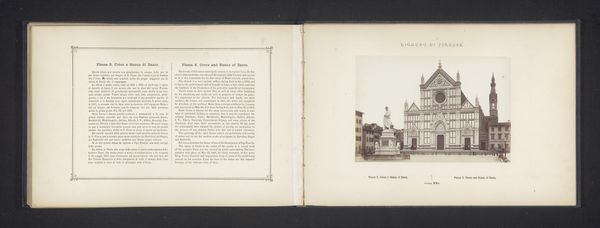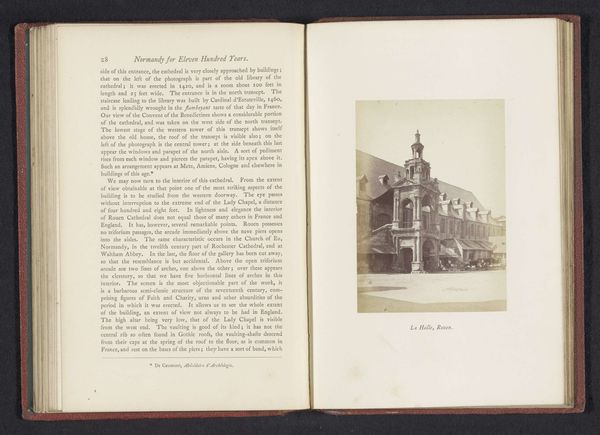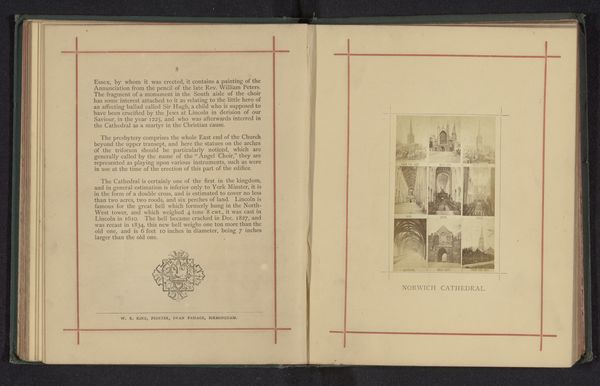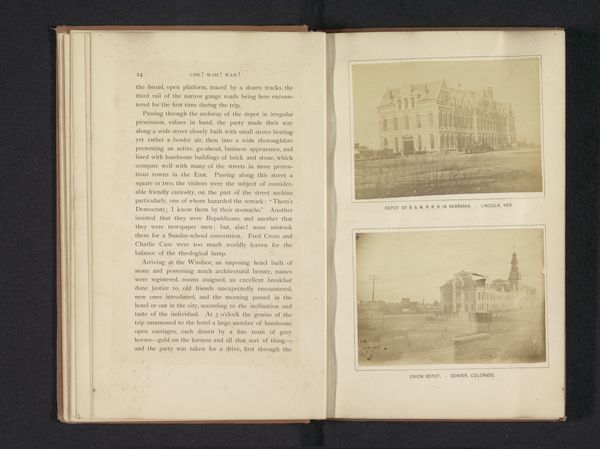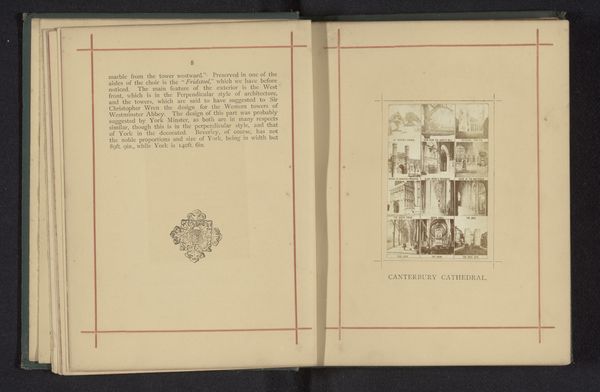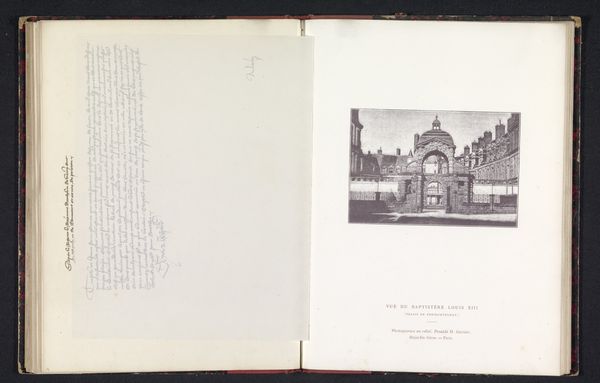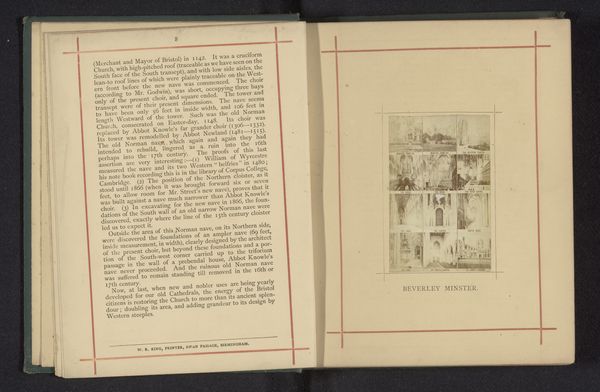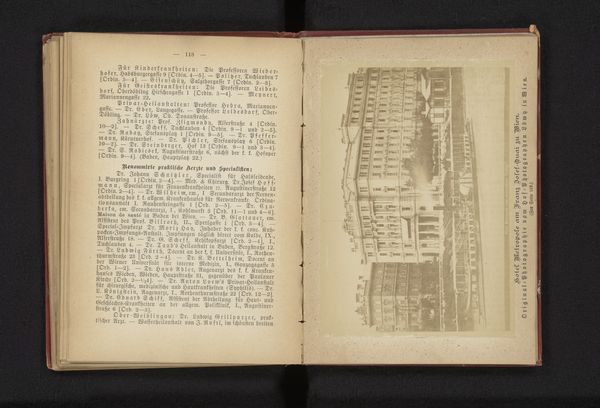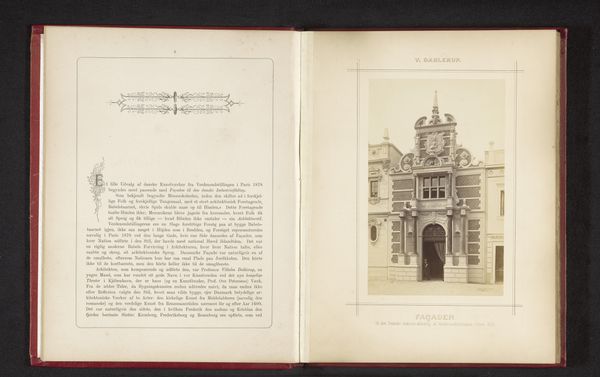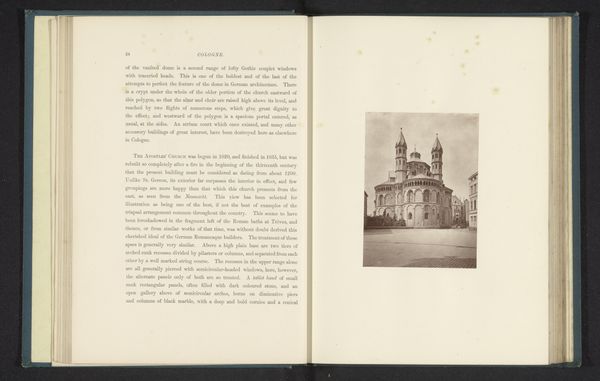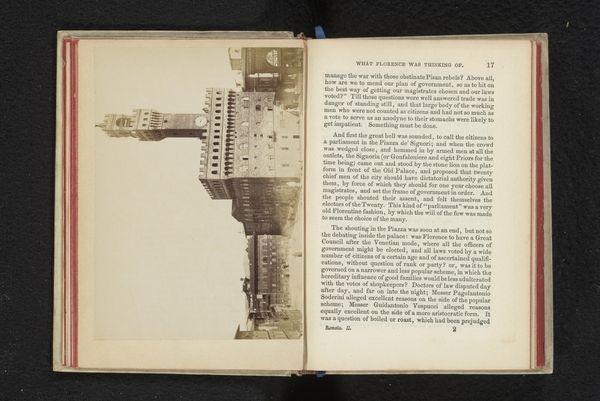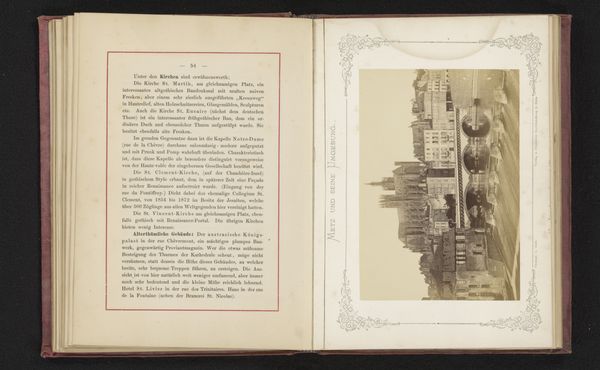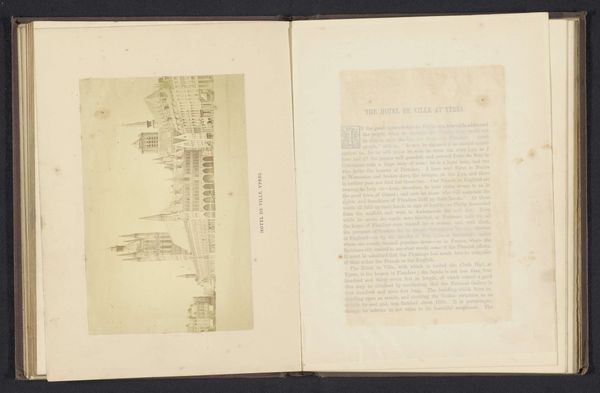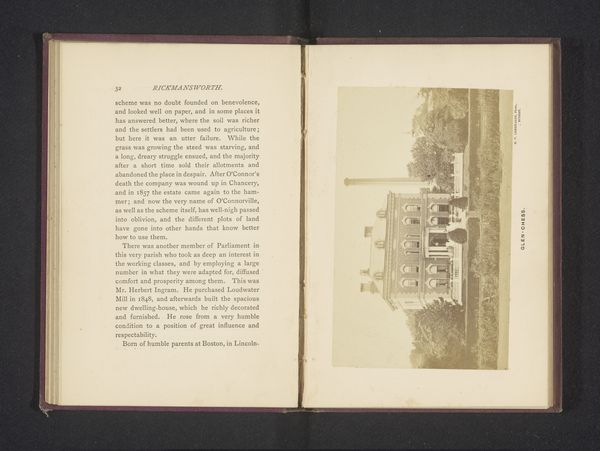
print, photography
# print
#
landscape
#
photography
#
cityscape
Dimensions: height 92 mm, width 61 mm
Copyright: Rijks Museum: Open Domain
This photograph of St. Paul's Cathedral in London, presented in book form, was produced by Ch. Pumphrey & Co. The sepia tone indicates an albumen print, a process popular in the 19th century, where paper is coated with egg white and then silver nitrate, creating a surface receptive to photographic chemicals. This method, while allowing for mass production of images, demanded skill in preparing the paper and controlling the developing process. The tonal range, from warm highlights to deep shadows, gives the image a sense of depth, and the surface quality is smooth, almost like a painting. Consider the labor involved: from the photographers setting up the shot, to the workers preparing the chemicals and printing the photographs. This image isn't just a depiction of a famous building; it's also a product of industrial processes that democratized image-making, making views like this accessible to a broader public and reflecting the burgeoning tourism industry of the time. So, in appreciating this photograph, we are also acknowledging the contributions of many hands and processes.
Comments
No comments
Be the first to comment and join the conversation on the ultimate creative platform.
